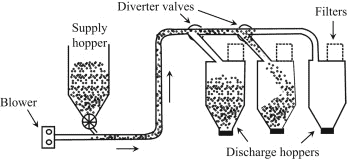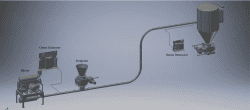Pneumatic conveying systems transfer bulk, dry materials, or powders, through a conveying pipeline using pressure and air flow, generated by either a fan or compressor.
It is a cost-effective alternative for efficiently handling and transferring bulk granular and powdered materials. Pneumatic conveying systems are used in a variety of industries such as for food and beverage, chemicals and detergents, and other specialist materials. To find out more about pneumatic conveying visit: https://www.aptech.uk.com/pneumatic-conveying-systems/vacuum-conveying.
There are many advantages and disadvantages of pneumatic conveying. Some advantages include the following:
- As pneumatic conveying systems are enclosed, the materials being transferred are protected against dust and external contaminants.
- Pneumatic conveying systems are easier and cheaper to maintain than a mechanical conveying system as there are fewer moving parts.
- Conveying pneumatic systems take up less space making them easier to move around and locate.
- With these systems you can have multiple points for pick up and discharging.
Some disadvantages of pneumatic conveying include:
- It is less efficient than a mechanical conveyor because you need to change the air pressure in order to produce conveying power.
- Normally it only transfers smaller volumes of materials even though it could transfer more. This can create some obstacles depending on the number of materials that need to be transferred.
- It’s possible that a larger dust collection system is needed as dust needs to be extracted at the end of the system.
- Not all materials are suitable for pneumatic conveying, which can present problems. Materials that aren’t appropriate include those that have high bulk densities, or larger particles, or are sticky and wet.



